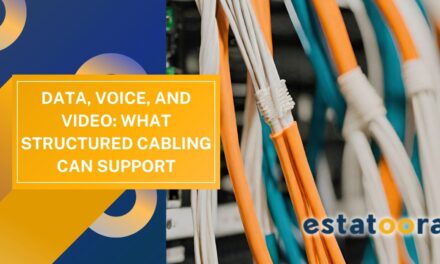A well-functioning network is the backbone of a productive workspace and an enjoyable home entertainment experience. When your network lags, video calls stutter, large files take forever to download, or your favorite streaming service buffers incessantly, it can be incredibly frustrating. Luckily, there are both technical solutions and smart usage practices you can implement to boost your network performance and make the most of your internet connection.
Why Does Network Performance Matter?
Optimizing Network Performance for Productivity and Entertainment Content Guide
- Why Does Network Performance Matter?
- Factors Affecting Network Performance
- Technical Strategies to Boost Network Performance
- “Smart Network Usage Habits Technical upgrades are important, but your own behavior can also greatly impact network performance.”
- Advanced Network Optimization Techniques
- Final Thoughts
Whether you’re working from home, running a business, streaming movies, or engaging in online gaming, a sluggish network can significantly impact your experience. Here’s why optimizing network performance is crucial:
- Enhanced Productivity: Fast, reliable network connectivity streamlines workflows, minimizes delays, and enables employees to collaborate efficiently, regardless of location.
- Improved Communication: A strong network supports high-quality video conferencing, crystal-clear VoIP calls, and the seamless sharing of large files crucial for modern businesses.
- Optimized Entertainment: Enjoy uninterrupted 4K streaming, lag-free online gaming, and fast downloads for the best home entertainment experience.
- Smart Home Performance: A well-optimized network ensures reliable connectivity for the growing number of smart home devices, from thermostats and lighting to security systems.
Factors Affecting Network Performance
Before we dive into optimization strategies, let’s understand the key factors that can influence your network’s speed and reliability:
- Internet Service Provider (ISP) Speed: The package you’ve subscribed to with your ISP sets the theoretical upper limit of your internet speed.
- Network Congestion: Heavy network traffic during peak hours, either on your local network or on the broader network infrastructure of your ISP, can cause slowdowns.
- Hardware Limitations: Outdated routers, modems, or network cables (e.g., using Cat5e instead of Cat6) can create bottlenecks that prevent you from reaching full potential speeds.
- Wireless Interference: Physical obstructions, other wireless networks in the vicinity, and outdated WiFi standards can impact WiFi range and performance.
- Malware and Background Processes: Any malware running on devices connected to your network or bandwidth-heavy background processes can consume resources and decrease overall performance.
Technical Strategies to Boost Network Performance
Let’s start by exploring the technical adjustments you can make to squeeze the most out of your network setup:
1. Upgrade Your Internet Plan
If you find your current internet speeds are consistently unable to meet your demands, it may be time to contact your ISP and discuss upgrading to a faster plan. This will directly increase the potential bandwidth available to your network.
2. Invest in Quality Hardware
- Router: Modern routers with support for the latest WiFi standards (like WiFi 6) and advanced features like MU-MIMO (multi-user, multiple-input, multiple-output) can significantly improve the speed and range of your wireless network.
- Modem: Ensure your modem is compatible with your ISP’s service and supports the speeds you’re paying for.
- Network Cables: Modern Ethernet cables like Cat6 or Cat6a allow for faster data transfer and better performance over long distances compared to older Cat5e cables.
3. Optimize Router Placement
Your WiFi router’s location plays a crucial role in signal strength and coverage. Place your router in a central location, away from walls, metal obstructions, and other electronic devices that might cause interference. Ideally, elevate your router to improve signal propagation.
4. Switch to a Mesh WiFi System
If you have a large home or office, or struggle with WiFi dead zones, a mesh WiFi system offers a powerful solution. Mesh systems utilize multiple nodes that work together to create a seamless, expansive wireless network, ensuring strong connectivity throughout your space.
5. Leverage Wired Connections
Whenever possible, use wired Ethernet connections for bandwidth-intensive devices like desktop computers, gaming consoles, streaming devices, and smart TVs. Wired connections offer the most stable and fastest speeds with minimal latency.
6. Update Firmware
Ensure your router, modem, and any other network equipment are always running the latest firmware released by the manufacturer. Firmware updates often include performance enhancements, bug fixes, and security patches.
7. Prioritize Traffic with Quality of Service (QoS)
Most modern routers offer Quality of Service (QoS) settings. These allow you to prioritize certain types of network traffic, such as video calls or online gaming, ensuring they get the necessary bandwidth even when the network is congested.
“Smart Network Usage Habits Technical upgrades are important, but your own behavior can also greatly impact network performance.”
8. Minimize Bandwidth-Heavy Activities During Peak Hours
If you notice your network slowing down in the evenings, consider scheduling large downloads, system updates, or cloud backups to happen overnight or during off-peak hours when network congestion is less likely.
9. Limit the Number of Connected Devices
While modern networks can handle many devices, there’s always a limit. Be mindful of how many devices are actively using the network. Disconnect gadgets you’re not currently using to free up bandwidth.
10. Protect Your Network with Strong Security
Implement strong WiFi passwords with WPA2 or WPA3 encryption. Change your passwords regularly. Not only does this protect your sensitive data, but it also prevents unauthorized users from piggybacking on your network and consuming your bandwidth.
11. Check for Malware and Unnecessary Background Processes
Regularly scan your computers, laptops, and other connected devices for malware infections. Close applications and programs you’re not actively using, as they might be running updates or other background processes that can impact your network performance.
Advanced Network Optimization Techniques
For tech-savvy users, here are a few more advanced techniques to consider:
12. Change Your WiFi Channel
If you live in a densely populated area, other nearby WiFi networks might be causing interference with your signal. Use a WiFi analyzer tool to identify less crowded channels and manually switch your router’s broadcast channel.
13. Configure Your DNS Settings
By default, you likely use your ISP’s DNS servers. Switching to a reputable public DNS provider like Cloudflare (1.1.1.1) or Google Public DNS (8.8.8.8) can potentially improve web browsing speeds and reliability.
14. Use a VPN Cautiously
VPNs encrypt your traffic and can be useful for privacy and security. However, they can also add latency and reduce connection speeds. Only use a VPN when absolutely necessary, and choose a reputable provider with high-speed servers.
Tired of slow internet and network frustrations? Contact Estatech today to optimize your network and unlock its full potential!
Final Thoughts
Optimizing your network performance is an iterative process. By combining technical enhancements with smart usage habits, you can significantly improve the speed, reliability, and overall experience on your home or business network. Don’t hesitate to seek professional assistance from a network specialist like Estatech, especially for complex setups or if you’re facing ongoing performance issues that you can’t resolve on your own.




